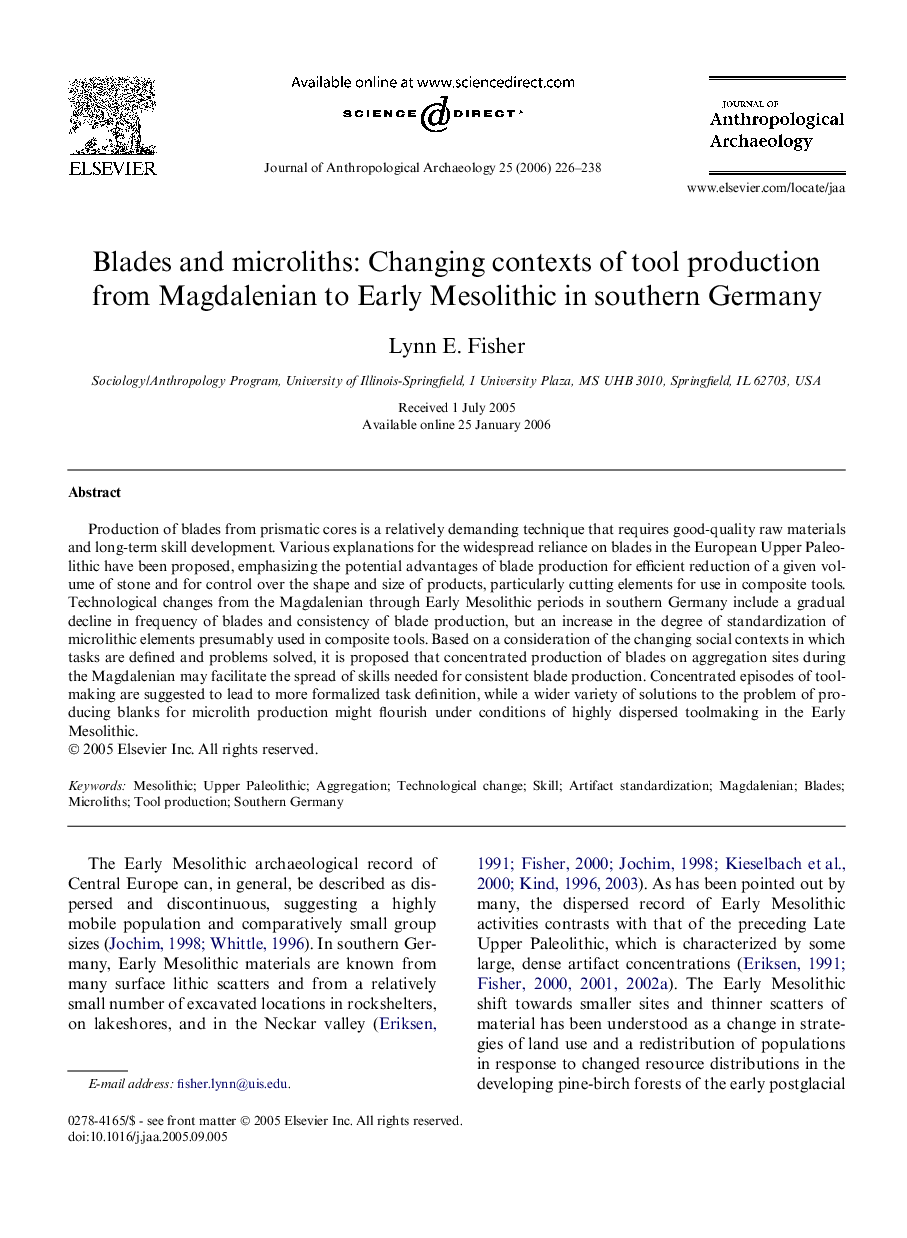| Article ID | Journal | Published Year | Pages | File Type |
|---|---|---|---|---|
| 1035105 | Journal of Anthropological Archaeology | 2006 | 13 Pages |
Production of blades from prismatic cores is a relatively demanding technique that requires good-quality raw materials and long-term skill development. Various explanations for the widespread reliance on blades in the European Upper Paleolithic have been proposed, emphasizing the potential advantages of blade production for efficient reduction of a given volume of stone and for control over the shape and size of products, particularly cutting elements for use in composite tools. Technological changes from the Magdalenian through Early Mesolithic periods in southern Germany include a gradual decline in frequency of blades and consistency of blade production, but an increase in the degree of standardization of microlithic elements presumably used in composite tools. Based on a consideration of the changing social contexts in which tasks are defined and problems solved, it is proposed that concentrated production of blades on aggregation sites during the Magdalenian may facilitate the spread of skills needed for consistent blade production. Concentrated episodes of toolmaking are suggested to lead to more formalized task definition, while a wider variety of solutions to the problem of producing blanks for microlith production might flourish under conditions of highly dispersed toolmaking in the Early Mesolithic.
